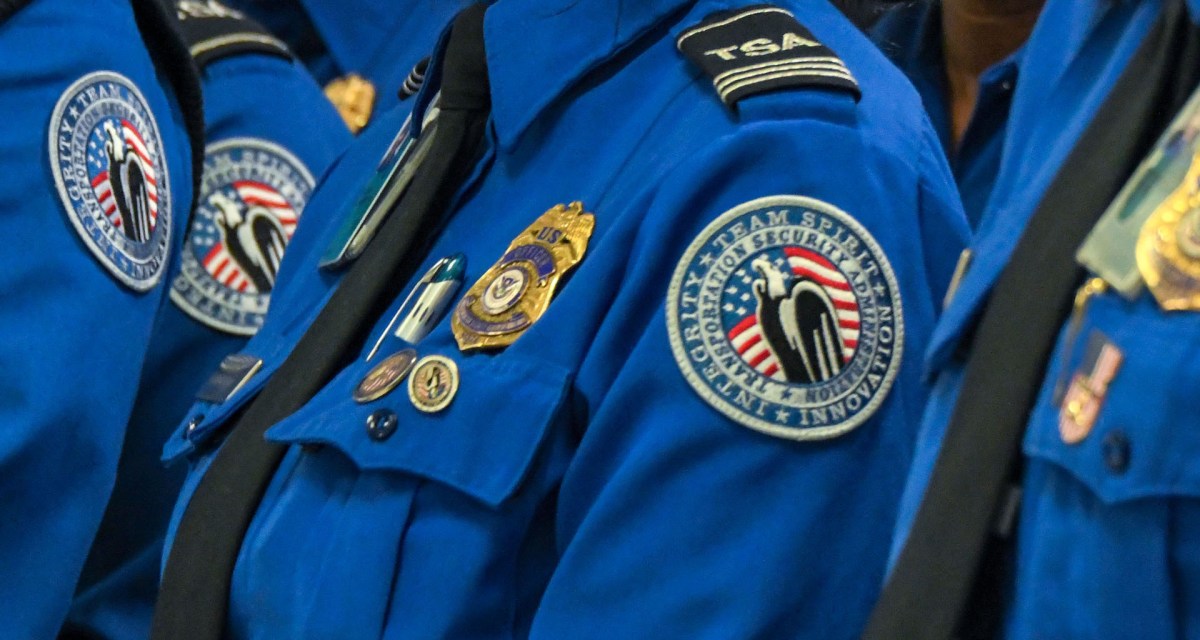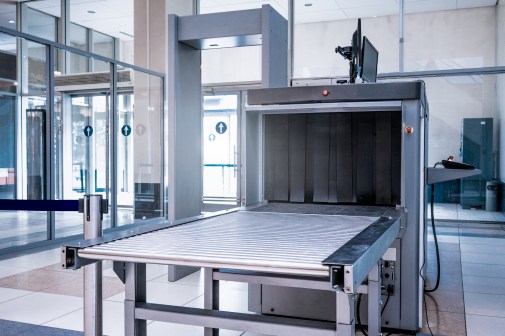Pandemic has TSA developing tech that detects threats while reducing physical contact

The Transportation Security Administration is taking advantage of reduced travel during the pandemic to accelerate deployment of technologies that increase airport security while reducing physical contact that could spread disease.
Travel remains down 20% compared to pre-pandemic levels, which made it easier for TSA to upgrade its computed tomography (CT), advanced imaging technology (AIT) and credential authentication technology (CAT) systems without disrupting travelers.
“These capabilities are providing better threat detection, which is really part of our fundamental mission, but interestingly — the convergence we’ve been trying to do through the pandemic — ensuring that we’re also providing health protection,” Stacey Fitzmaurice, executive assistant administrator for operations support at TSA, told FedScoop during FedTalks on Wednesday.
TSA is focused on ensuring pilots of the new technology are transparent. The agency hopes that the systems effectively identify threats, while also preserving privacy through opt-ins and promoting better public health.
CT is 3D imaging technology that screens passengers’ luggage at checkpoints and allows TSA agents to rotate the resulting image to view a bag from all angles — reducing the number that need to be physically opened for closer inspection. TSA is also considering how to integrate UV sanitation systems with X-ray and CT systems, so they sanitize the reusable bins.
AIT looks for metallic and nonmetallic threats on peoples’ bodies, and enhancements will eliminate the need for travelers to pose with their hands up in favor of a more relaxed posture during screening.
CAT handles identity management, and the process for authenticating the validity of travelers’ IDs is being automated. The CAT system links to TSA’s Secure Flight vetting system in real time to verify a person’s identity, ensure they’re not high risk and speed them through checkpoints.
TSA wants to add a biometric capability to CAT that uses a person’s physical features to facilitate airport access. To that end the agency is piloting one-for-one and one-to-many match systems.
One-for-one systems see travelers approach a CAT machine, have them insert ID such as a driver’s license and take a live photo for comparison — assuming the person has opted in.
One-to-many systems cater to travelers who have pre-enrolled in programs like TSA PreCheck and have a camera attached to a CAT machine take a live image of a person and compare it to an existing gallery.
TSA is also working with companies to potentially incorporate digital identities — driver’s licenses or passports kept on travelers’ phones for scanning by a CAT system. The Department of Homeland Security Science and Technology Directorate is a partner in testing such systems to eliminate bias.
While TSA is “closely tracking” the national conversation around vaccine passports, whereby a traveler would verify they’ve received a COVID-19 vaccine, the agency has no current plans to require them, Fitzmaurice said. TSA is still interested in vaccine passport development though and ensuring only the information necessary for that use case is accessed, valid and protected.
New capabilities need to have cybersecurity built into their IT backbone, and TSA is ensuring multi-factor authentication, constant monitoring, and robust cyber training and awareness for all employees, Fitzmaurice said.
TSA must also ensure its partners — airlines, airports, surface transportation companies, and pipeline operators — also have appropriate cyber protocols in place.
Since the Colonial Pipeline ransomware attack in May, TSA and the Cybersecurity and Infrastructure Security Agency have improved communication with pipeline operators regarding industrial control systems and operational technology.
“We’ve been working with the pipeline operators to implement some new requirements for cybersecurity to ensure that we can help protect against the rising cyber threats and better protect both the national and economic security of the U.S.,” Fitzmaurice said.





